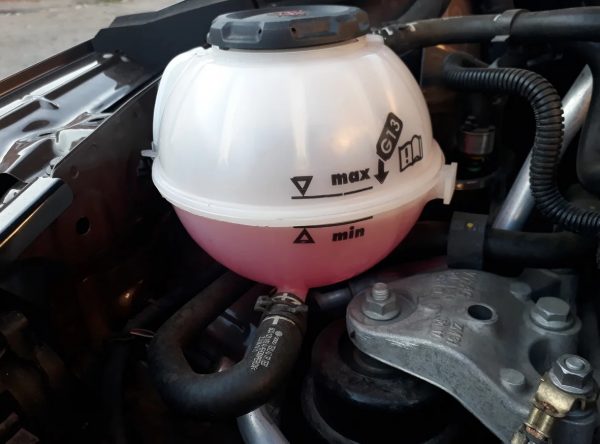
Antifreeze is leaving, but there are no smudges - what is wrong with the car?
The operation of the engine of any car is inextricably linked with the correct functioning of the cooling system. Most of the system malfunctions are caused by antifreeze leakage and the subsequent overheating of the motor. An untimely detected breakdown will lead to rapid wear and damage to the motor, as well as expensive repairs.
Why does antifreeze go
One of the most common problems with the engine cooling system is fluid leakage. Due to the low level of antifreeze, malfunctions can occur both with the motor itself and with parts of the cooling system. Therefore, the liquid level in the expansion tank must be regularly monitored and not allowed to drop below MIN. You can determine that antifreeze is leaving by the following signs:
- the coolant level is constantly decreasing;
- the heater stops working;
- the engine temperature rises above normal.
The minimum increase or decrease in the coolant level in the expansion tank is considered normal. However, if the antifreeze has to be added periodically, then you need to deal with the problem that has arisen.

Drip engine radiator
The most common reason why coolant leaves the system is damage to the main radiator of the cooling system. You can diagnose a malfunction by smudges on the assembly body or a puddle under the car after parking. Damage to the heat exchanger can be caused by the following factors:
- exposure to corrosion as a result of long-term operation;
- hit by a stone flying out from under the wheels.

The radiator by its design consists of many cells through which the coolant circulates. Even the slightest damage to one of them will lead to a leak. To diagnose a breakdown, you will need to dismantle the heat exchanger from the car, assess the nature of the damage and try to restore the tightness by soldering or argon welding. If no action is taken to eliminate the leak, the motor will overheat, which sooner or later will lead to serious consequences and expensive repairs.
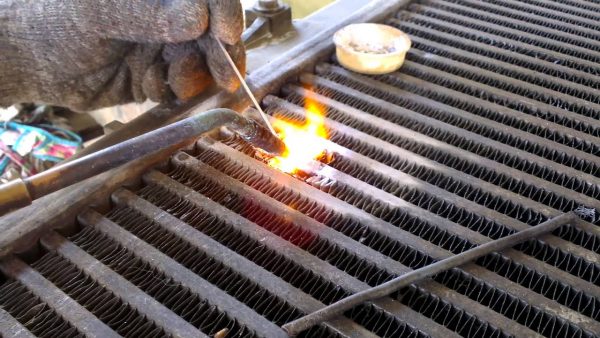
Malfunction of the radiator or stove faucet
Sometimes there is a leak in the interior heater radiator. The problem manifests itself in the form of a puddle of coolant under the front passenger carpet, as well as a foggy windshield. In this case, the radiator will have to be dismantled from the car to identify the damaged area and carry out similar measures as with the main radiator.

Depending on the make and model of the vehicle, the instrument panel may need to be disassembled to remove the stove heat exchanger.
If the leak is caused by a leak in the faucet, then drops of antifreeze will be visible on it. The device, as a rule, cannot be repaired and is replaced with a new part. Sometimes antifreeze starts to leak due to the aging of the gaskets between the faucet and the radiator. In this case, they are simply replaced with new ones.
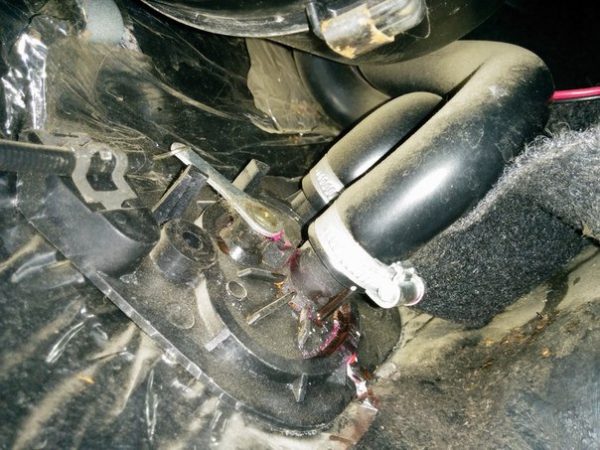
Defects in hoses, nozzles and tubes
A large number of pipes made of rubber are used as connecting elements in the engine cooling system. Due to the constant exposure to an aggressive environment, temperature differences and vibrations, rubber becomes unusable over time, cracks appear. The formation of damage on the pipes unequivocally leads to leakage of antifreeze as the engine warms up and the pressure in the system increases. Worn hoses must only be replaced. Any tricks and attempts to patch and restore their integrity will lead to leakage and loss of antifreeze. The fault, if it can be eliminated, is only for a short time.

The tightness can be broken not only by damage or wear of rubber pipes, but also by metal pipes, which are also present in the cooling system. These elements corrode and burst over time. Therefore, if a leak is detected, the tubes must be replaced.
Pump failure
Sometimes the reason for leaving the coolant is the wear of the water pump seals: gaskets and stuffing box. The gasket most often fails due to long service life or damage, for example, if the pump was overtightened. Confirmation of pump leakage is a wet engine at the pump installation site, as well as the presence of drops of coolant on the mechanism housing from below. If the malfunction is caused by wear of the gasket, then it is enough to replace it or use a gasket sealant. If the stuffing box fails, it will be necessary to carry out repairs if the design of the pump allows it. Otherwise, the node must be replaced.

Thermostat
As a result of long-term operation, the thermostat housing begins to leak over time. This assembly is responsible for regulating the flow of coolant by opening and closing the valve located inside. In the event of any damage, the device must only be replaced.
Expansion tank defects
The body of the expansion tank is usually made of plastic. Over time, it can both burst and rub against the body elements, which depends on the installation location. Such a malfunction cannot be overlooked, since the container or its lower part will be wet. If the tank is damaged, you can try to solder it, but it is better to replace it with a new one, since soldering will only temporarily eliminate the leak. In addition to the tank, the cover may fail, since a valve is installed inside it, designed to maintain a certain pressure in the system. If there is a problem with the valve, the antifreeze will splash out after the engine warms up. In this case, the cover needs to be diagnosed or replaced.

How to find an antifreeze leak
Since coolant can leave different places in the system, you need to know where and how to look for a problem area.
Visual inspection of pipes and clamps
By visual inspection, you can identify the places of coolant smudges. The more it leaks, the easier it is to find the leak. The procedure should begin with the nozzles, since on many cars they have free access. During inspection, you need to carefully check each hose of the cooling system, especially if the elements have been changed for a long time.
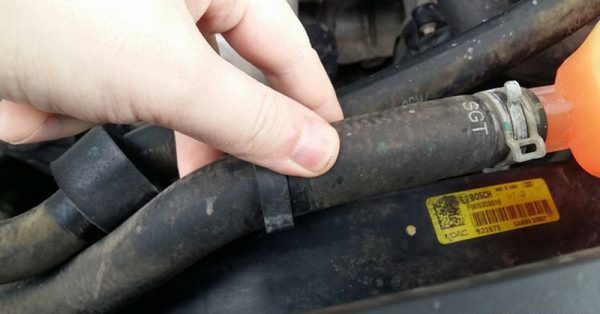
In hard-to-reach places, you can use a mirror to check. Damaged hoses must be replaced. If no leaks are found on them, they should still be examined for prevention purposes. Additionally, the clamps are subjected to visual inspection. Sometimes it happens that a coolant leak is caused by a loose fastener. In this case, a stronger tightening of the clamps allows you to get rid of the problem in question.
Video: antifreeze leak due to loose clamps
Use of cardboard
With the use of a sheet of cardboard or paper, even the smallest leakage can be determined. To do this, put a sheet of paper under the engine compartment. After a long stay, drops or a puddle of antifreeze will be clearly visible on the material. Based on the identified location, you can start searching for the area with a malfunction, which will be much easier to do.
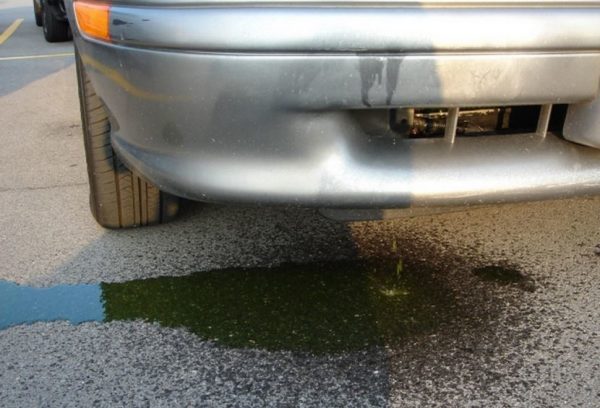

Expansion tank check
Expansion tank diagnostics can be performed in several ways:
- Wipe the case dry. After that, the engine is warmed up to operating temperature and they look for antifreeze smudges on the body.
- The container is dismantled, the coolant is drained and it is checked using a car pump and pressure gauge. To do this, create a pressure of the order of 1 atmosphere and monitor whether it will decrease or not.

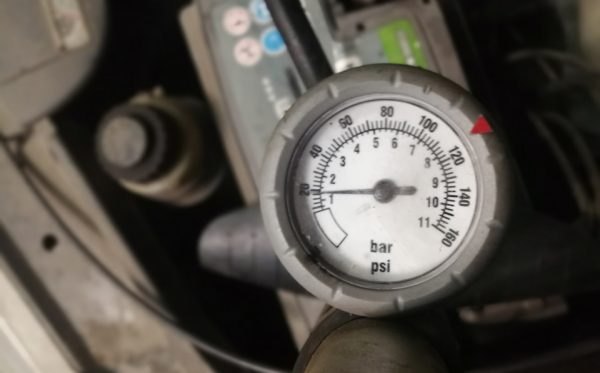 You can check the expansion tank using a pump with a pressure gauge
You can check the expansion tank using a pump with a pressure gauge - By means of the pump, pressure is created in the cooling system without removing the tank. Thus, it is likely that the leak can be detected faster.
By resorting to the third method, it is possible to diagnose the entire cooling system for leaks.
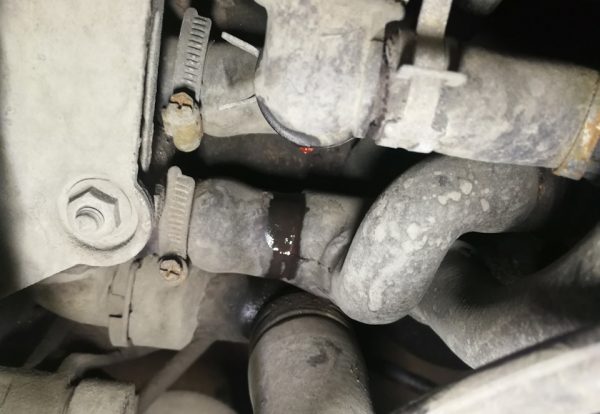

Cover Diagnostics
The lid valve can be checked in a fairly simple way. To do this, on a cold engine, unscrew the cork and shake it near the ear. If you can hear the inner ball clicking in the valve, then the device is working properly. If there is no such sound, you can try to rinse the cover. If this does not help, then it is better to replace it.
Video: checking the expansion tank cap


Watch this video on YouTube
Using Fluorescent Antifreeze Additive
A rather original way to diagnose a cooling system is to use a special additive in the coolant. Today, such funds are represented by a large assortment. As a rule, they are added to antifreeze, and the check is performed on a running engine with an ultraviolet lamp.
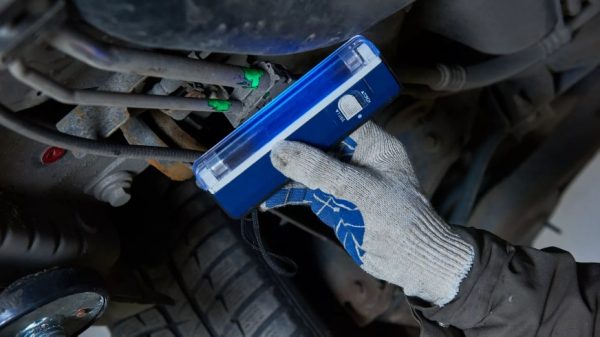

With its help, the place of leakage is revealed, in turn checking the elements and mechanisms of the system. This test method is one of the most effective, since it allows you to identify hidden leaks, as well as when the coolant leaves in minimal quantities. With a visual inspection, such places are quite difficult to find.
Video: checking the system with an ultraviolet lamp


Watch this video on YouTube
Antifreeze leak without visible smudges
In the event that the coolant leaves for no apparent reason, then most likely the malfunction is hidden, while the antifreeze gets inside the engine.
Burnout cylinder head gasket
The most likely cause of the leak is a burnt head gasket or a violation of the cylinder head to the block due to engine overheating.
The gasket is designed to seal and separate the engine head from the block.
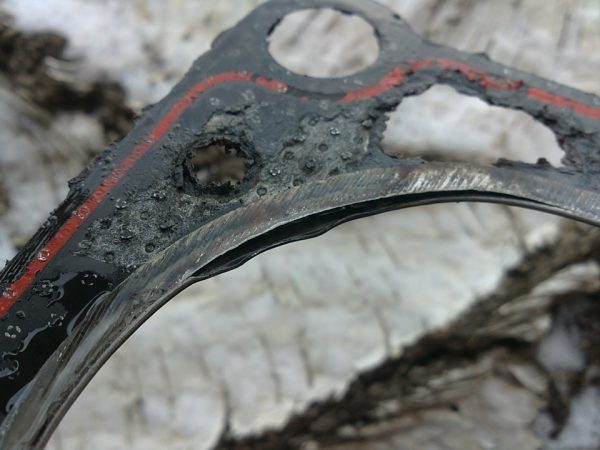

The ingress of antifreeze into the cylinders may be accompanied by white smoke from the exhaust pipe, which is the result of the combustion of the coolant. In case of incorrect installation of the gasket or its burnout, air bubbles can sometimes be observed in the expansion tank. It is impossible to operate a car with such a malfunction, since there is a high probability of damage to the head with subsequent costly repairs. The malfunction is eliminated by replacing the seal on its own or in a car service.


If the cause lies in damage to the head, the assembly must be checked and polished on a special machine. Some motorists are engaged in grinding on their own, but since the cylinder head is a responsible mechanism, this procedure is best done on specialized equipment in a service environment.
Replacing the gasket
Replacing the gasket can seem like a complicated process, but if desired, this procedure can be performed by anyone. The event involves the following steps:
- Buy a cylinder head gasket for your car engine.
- The valve cover, air filter and various tubes that are fixed to it are dismantled.
- The cylinder head mount is unscrewed, for which you will need a head of the appropriate dimension and a knob, since the fastener is wrapped with great effort. You can try to fix the leak by tightening the bolts more. If this does not help, the head will still have to be removed.
- Remove the head and gasket.
- They wipe the planes on the block and cylinder head, after which they install the gasket and mount everything in the reverse order. The head is tightened in a checkerboard pattern with a force that is indicated in the repair instructions for your car.
No matter for what reason the head of the block is dismantled, the gasket is always installed new.
Video: cylinder head gasket replacement using Lanos as an example


Watch this video on YouTube
Cracked cylinder head or block
In addition to burning out the gasket, leakage can be caused by cracks in the head or in the block itself, while the coolant does not have to come out. If oil and cooling channels are affected with such damage, antifreeze can enter the engine cylinders, followed by mixing the lubricant with antifreeze. In this case, the liquid level decreases, and the oil loses its properties. With such a malfunction, severe wear of the parts of the power unit, jamming and failure occur.
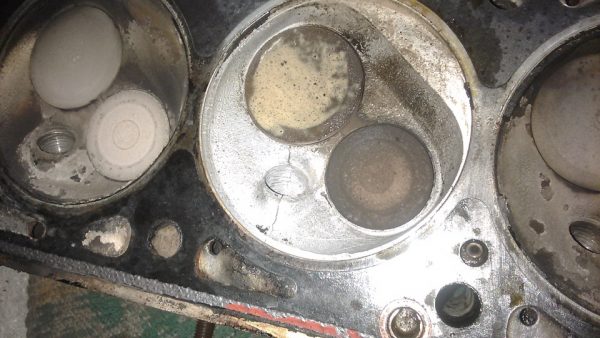

Since an emulsion is formed when the coolant enters the oil, it is necessary to check the lubricant level and visually assess its quality. If it was found on the dipstick that the level of lubricant has increased markedly and there is a substance in the form of a brownish-white foam on it, then this will indicate leakage of antifreeze into the lubrication system. During the diagnosis, you can also turn out the candles. If white spots are found on them, then this will also be a confirmation of coolant getting into the oil. In this case, disassembly of the engine and a detailed diagnosis of the head and block for cracks will be required. As a rule, such a procedure is carried out in the service.
Various malfunctions can occur with the engine cooling system, as a result of which the level of antifreeze decreases, which leads to overheating of the power unit. There can be many reasons for a leak, but almost every one of them can be identified on your own without the use of specialized equipment.

